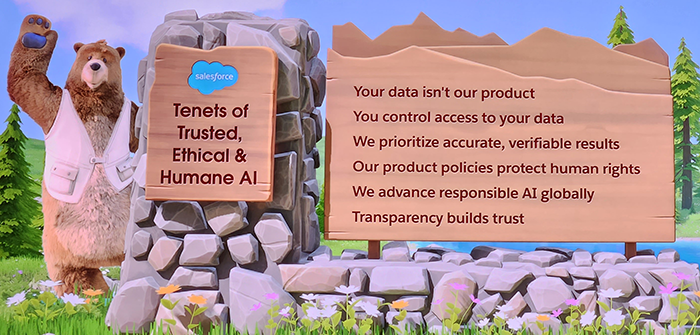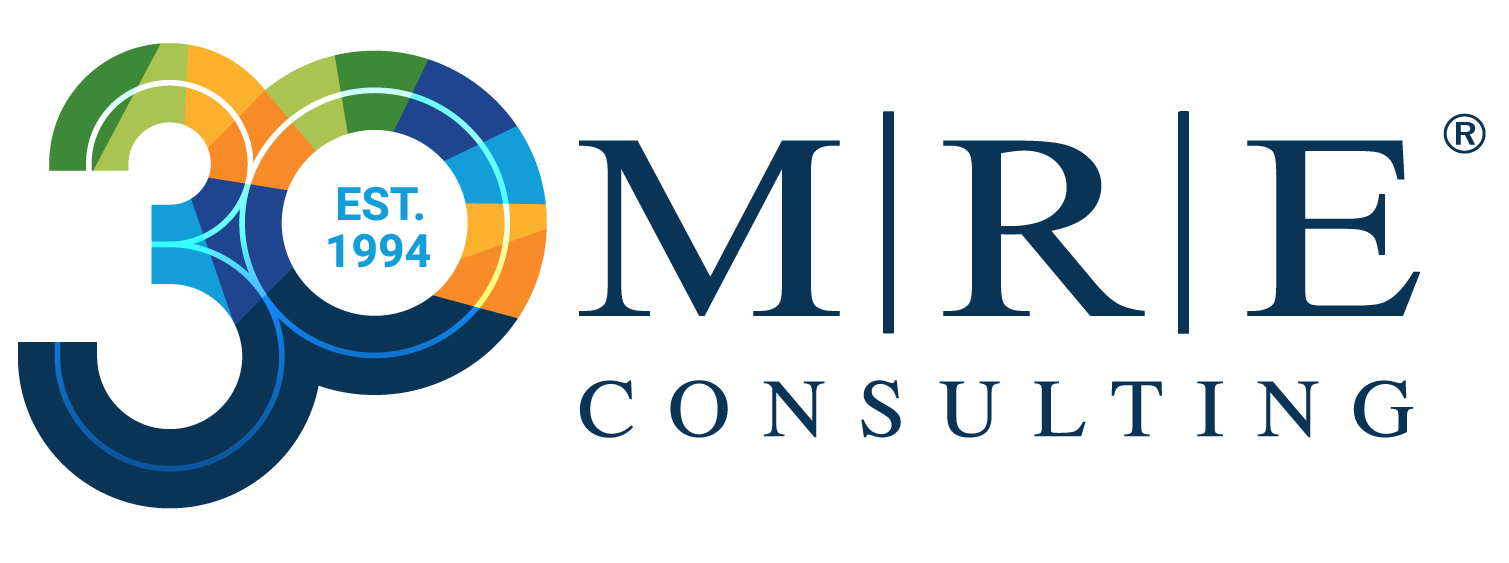By Keegan Klauke
Have you ever experienced the whirlwind that is Dreamforce? This annual convergence of innovation, insights, and networking offers a dizzying array of sessions, demos, keynotes, and parties. As we wrap up this year’s event, let’s dive into the standout takeaways that defined this year’s Dreamforce.
Notable & Best of the Best Takeaways:
- Einstein1: The AI Platform – Salesforce announced that they will be investing heavily into not only a solution but a platform for AI Adoption and Development. This is called Einstein1. It will allow you to use Salesforce’s Model, Your in-house model, or any 3rd party model(OpenAI, AWS, Google).
- Salesforce’s AI Value Proposition: Data Privacy and Trust – One of the major takeaways from the event, is how Salesforce as a company and provider of AI Solutions are focusing on trust in the use of your company data, and Trust in the accuracy of the results that are provided by these large language models.

- Data Cloud “Free SKU” – Salesforce announced Datacloud & Tableau will be available for Enterprise, Unlimited and Unlimited Plus Subscriptions. Includes 10k profiles and 2 Tableau Creator Licenses and 250,000 data service credits
- Salesforce’s AI for every Cloud – Salesforce is going to create many solutions for AI aligning with their different product offerings:
- Einstein1 DataCloud
- Einstein1 Sales
- Einstein1 Service
- Einstein1 Marketing
- Einstein1 Commerce
- Einstein1 Platform Services
- Einstein1 Tableau
- Einstein1 Canvas(Quip)
- Einstein1 Industries (Vlocity)
- Einstein1 Mulesoft
- Salesforce Leading the AI Revolution – Salesforce is also investing $500M in many startups through their Salesforce Ventures Fund.
- Einstein 1 Copilot Studio
- Prompt Studio – Salesforce demoed this solution which allows you to customize prompts in Salesforce to help generate custom responses for individual tasks you define.
- Skills Builder – Execution of tasks based on Einstein LLM responses, and allows that information to be used across other areas of the platform. (ex. Prompt returns a Customer Attrition Score of 2/10? Then go create a case and email campaign to save the customer).
Flow EnhancementsReactive screen flows – being able to have multiple elements on 1 screen flow change as you enter data. Reduces back and forth navigation through screen components. - Custom error messaging on Screen Flows – New functionality added so that users can be shown appropriate and actionable error messages instead of standard error messages.
- Enhancements to E&U Cloud and consolidation of more features into the core salesforce architecture.
Scale Center – is a generally available solution that Salesforce has deployed to help companies manage their errors and scalable performance metrics within the Salesforce architecture. This is included in the subscription price in Unlimited Orgs. - Einstein for Developers – allows developers to type in a prompt for what you want it to build in apex, and it will generate the Apex code solution for you using Salesforce best practices.
- Global Styling hooks – Allows you to keep brand consistency across your LWC’s and custom development.
- AI Enablement across the Ecosystem – Many third party ISV’s are leveraging AI platforms. Be careful and know how they plan to secure and manage the data you provide them to train on.
- Conga Enhancements – Conga is getting into the CPQ Space and applying AI to review contracts, identify anomalies, Extract context of Legal language, and Surface contractual concerns during the contract revision and review process.
Now for the Hard Core Developer Announcements
- Track Publishing of Platform Events in Apex – use a class like this: public class XYZ implements EventBus.EventPublishFailure[Success]Callback{} when you want to track onFailure() and onSuccess() methods to either log an error or let someone know that it is complete.
- Einstein ConnectAPIAdaptor – When looking at Einstein from the Apex code perspective, you are able to create custom methods that leverages the Einstein LLM and allows you to configure them to call a language model and generate custom responses to your custom built inputs.
- Advanced Security in SOQL Queries & DML Statements – Enhancements to data security across the platform in Apex by leveraging the USER_MODE tag on SOQL and DML.
Enhancements to field service and offline screen flows/LWC’s. - Figma for Wireframes to LWC Conversion – There was also mention of a very cool solution called Figma that allowed you to take a configuration to build out components of a screen or component and convert them quickly into lightning web components and it’s underlying Json and HTML metadata tags, which will quickly the ability to develop lightning web components from concept to final product.
- Dev Console Replacement – Salesforce has also shown further progress in code Builder, which will replace Dev console.
- Platform Cache in Apex – Increase Apex performance by using Platform Cache (Cache.OrgPartition) exposed to Apex Developers.
- DataWeave in Apex – Incorporation of new DataWeave elements so you can map your data in one place and not maintain that mapping in Apex.
- Idempotency in LWC – Enhancement to LWC API’s that stop a call from being made multiple times if a button is accidentally hit multiple times.
- GraphQL – Examples and recipes highlighting GraphQL powered lightning web components for fast and efficient data retrieval.
- Set Parameters on Queueable Jobs – Using AsyncOptions, Guard against runaway jobs, Avoid Busy Polling or Waiting & Avoid contention or redundant jobs
- Trade DML statements for Heap Size – ONLY SPECIAL USE CASES ONLY! Using In-Loop SOQL DML, you can batch your updates in sets of 200 instead of growing a very large heap size. You need to have the update statement in the loop and have it written like “update as user [sObject];”
- Create Named Credentials using Apex – use the ConnectAPI.NamedCredentialCalloutOptionsInput to define a named credential, then call ConnectAPI.NamedCredentials.createNamedCredential(input) to generate your own named credential.
- Prevent SOQL Injection Attacks – by using Database.queryWithBinds() you can stop people from executing injection attacks.
Want more insights just like this?
 Join the Salesforce Developer Group in Houston! The title of the group may say “Developer” but we are really a collection of Salesforce Enthusiasts who thirst to dive one level deeper and break the mold of the traditional cookie-cutter Salesforce titles.
Join the Salesforce Developer Group in Houston! The title of the group may say “Developer” but we are really a collection of Salesforce Enthusiasts who thirst to dive one level deeper and break the mold of the traditional cookie-cutter Salesforce titles.
Look forward to seeing you at the next meeting!
– Keegan Klauke
Keegan is a passionate software architect with a proven track record in Salesforce and ETRM ecosystems. With a keen eye for detail and a focus on client success, he crafts high-quality, customized solutions for diverse industries. He also shares his expertise as a Community Group Leader in the Houston Salesforce Developer Group, promoting best practices in enterprise cloud software solutions.





